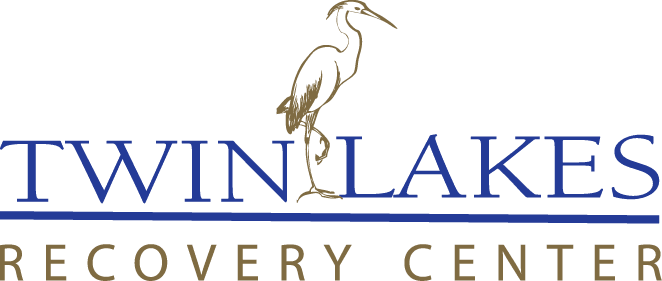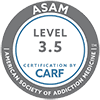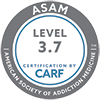Many women love to get together for social activities that involve alcohol.

More people than ever are imbibing. NPR shared a study from JAMA Psychiatry released in 2017 which noted a sharp increase overall in high-risk consumption for Americans: up nearly 30 percent between 2002 and 2013.
High consumption in a short period of time—sometimes referred to as binging—is four or more drinks daily for women, and five or more drinks daily for men. This behavior rose sharply for women: approximately 58 percent.
Just a few years ago, Robert Brewer with the Centers for Disease Control co-authored a study examining the gap between moderate drinkers and people identified as alcoholics. The results, shared in the publication Preventing Chronic Disease, revealed that many people may raise only a glass or two during the week, but on weekends, end up consuming quite a bit.
This type of behavior changes their status to excessive drinkers. Based on the study data, one in three people fit this description. Women need only consume eight or more drinks a week to slip into this category. But what makes this definition more complicated is these individuals aren’t considered alcohol-dependent because they don’t experience withdrawal symptoms when they consume less, nor do they develop an increased tolerance for the substance.
However, women still have a greater risk of alcohol-related deaths.
What Recent Research Indicates
In late 2018, details of a more comprehensive study made headlines, mainly because the statistics were more in-depth on a singular topic: alcohol-related deaths.
Research gathered between 2007 and 2017 by the Institute for Health Metrics and Evaluation (IHME) presented the following:
- Alcohol-related deaths rose 35 percent, increasing the total death rate by 24 percent.
- While alcohol-related deaths for men expanded close to 30 percent, alcohol-related fatalities involving women surged by almost 70 percent.
There are many factors that contribute to these findings:
- Women, especially those middle-aged and older, are more open about their drinking habits than in previous decades because there’s less societal need to hide their behavior.
- Few people recognize just how much they’re actually drinking. According to the National Institute on Alcohol Abuse and Alcoholism (NIAAA), a standard serving by federal guidelines is 1.5 oz. of spirits, 12 oz. beer, 5 oz. table wine, and 8-9 oz. malt liquor. If a typical wine glass holds 15–20 oz., and most people pour to fill that glass, overconsumption happens quite quickly. A 180 lb. woman is legally intoxicated after three drinks.
- When reporting the new IHME research, an article in USA Today also referenced data from a study of ER visits between 2006–2014, which pointed to “an increase among middle-aged women admitted for complications due to excessive alcohol consumption either from accidental binging, or intentional long-term use.”
- The Centers for Disease Control indicates “approximately 12 percent of adult women report binge drinking three times per month, averaging five drinks per binge.”
IHME, located at the University of Washington, cites a greater social acceptance of drinking, along with a heightened expectation to participate in alcohol-related activities, as two primary reasons why women are more at risk now than ever before. As a legal substance, any event or gathering serving alcohol is available to all persons over 21—and it’s far more acceptable to consume alcohol than illicit drugs. In some situations, the assumption is they’re enhanced by the presence of alcohol.
WebMD shared data from a 2017 study sponsored by NIAAA indicated “female alcohol use disorder in the U.S. increased by 83.7 percent between 2002 and 2013.” Further, while men drink more overall, there’s less of a dividing line between male and female consumption. According to the National Institute on Drug Abuse, research from the past two decades indicated “more females than males are drinking…and for the first time in history, are more likely to drink by 10th grade than males.”
NIAAA also noted “5.3 million women in the U.S. drink alcohol in a way that threatens their health and safety.”
Why Women Have Greater Health Problems Because of Alcohol
Women experience higher blood alcohol concentration than men because they have less water in their bodies. They also feel the effects of alcohol more quickly and for extended periods of time. NIAAA research suggests these physiological aspects are why women are more vulnerable to traumatic experiences, chronic illnesses, and death.
For a woman with a drinking problem, health risks include:
- Increased inflammation
- Compromised immunity
- Nervous system complications, including neurotoxicity, which kills nerves
- Heart disease
- Liver damage, hepatitis, and cirrhosis
- Brain damage, memory loss, and reduced cognitive processing
- Cancer of the breast, liver, throat, and reproductive organs
- HIV and sexually-transmitted diseases
- Mental health illnesses such as anxiety, bipolar disorder, borderline personality disorder, depression, and suicidal thoughts
Women are also more likely to be victimized by alcohol-related traffic accidents and violence.
Help Is Available Right Away
If you recognize that alcohol dominates your social activities and you fear over-consumption might put your health at risk, there are options.
For example, Twin Lakes Recovery Center has an outpatient treatment program to provide the education, therapeutic services, grounding, and support you need to end excessive drinking or prevent alcohol dependency.
We also offer an extensive residential treatment program if there’s a strong likelihood you have a chemical dependency complication and require medical attention, as well as further behavioral and health modifications to change your life for the better.



